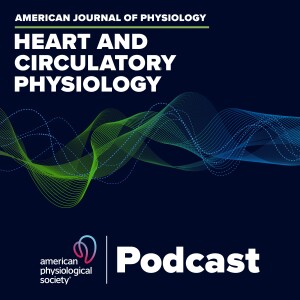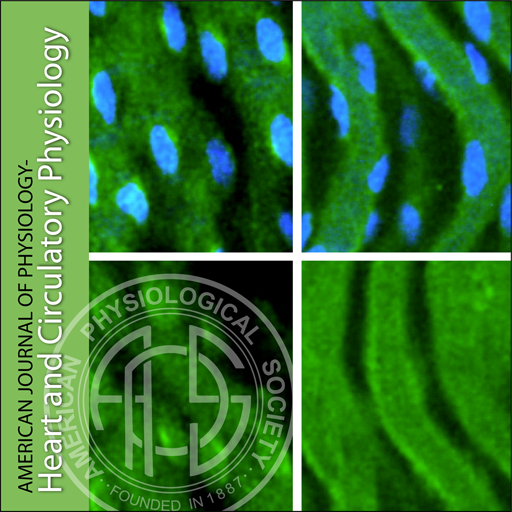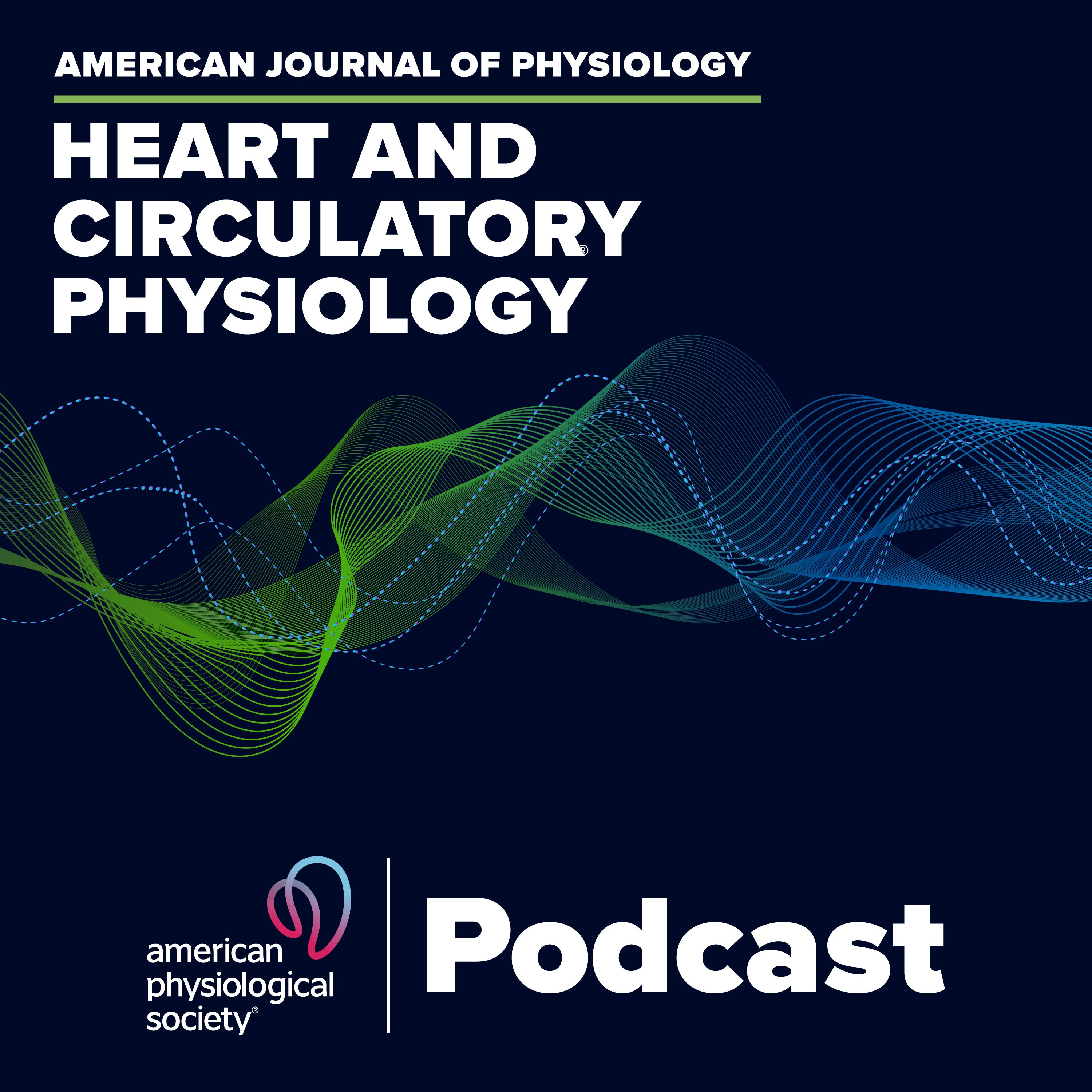Episodes

Tuesday May 19, 2015
Mechanotransduction and Redox Signals
Tuesday May 19, 2015
Tuesday May 19, 2015
Why cover only one article in a podcast, when we can discuss five articles at once? In this podcast on a unique Review article, Associate Editor Nancy Kanagy (University of New Mexico) interviews senior author and symposium organizer Shampa Chatterjee (University of Pennsylvania) and leading expert Mark Nelson (University of Vermont) about five reports presented at the 1st Pan American Congress of Physiological Sciences: Physiology Without Borders held in August 2014 in Iguassu Falls, Brazil. Under the umbrella topic of mechanosignaling and downstream redox-dependent responses, what links the mechanical forces at the cell membrane to the intracellular responses? Several key new findings were presented at the meeting. Among them, researchers have found that numerous elements on the cytoskeleton, such as PECAM and caveolae (caveolin-1), work together to form a mechanosome. Is the key to understanding the response to mechanosensing defining the machinery within the multifarious mechanosomes? How do we translate observations in cultured cells to responses in intact tissues and animals? Listen and learn.
Shampa Chatterjee, Keigi Fujiwara, Nestor G. Perez, Masuko Ushio-Fukai, Aron B. Fisher Mechanosignaling in the Vasculature: Emerging Concepts in Sensing, Transduction and Physiological Responses Am J Physiol Heart Circ Physiol, published online April 11, 2015, DOI: 10.1152/ajpheart.00105.2015.

Tuesday May 12, 2015
TTD Reverses Human Cardiac Myofibroblast Activation
Tuesday May 12, 2015
Tuesday May 12, 2015
How does Tetrandrine (TTD) directly affect human cardiac fibroblasts, and can it benefit heart failure patients? In this new podcast, Deputy Editor Merry Lindsey (University of Mississippi Medical Center) interviews lead author Paul Fedak (University of Calgary) and content expert Jason Gardner (Louisiana State University Health Sciences Center) about the exciting new work by Teng et al which investigates the potential therapeutic agent TTD, a calcium channel blocker with anti-fibrotic effects in human patients. In addition to in vivo studies, Fedak and co-authors used a unique micro gel technique to isolate a single human fibroblast and identify its influence on local matrix remodeling. Given that the primary dysfunction associated with heart failure with preserved ejection fraction (HFPEF) is reduced relaxation due to extensive fibrosis, the results shown by Fedak and colleagues are particularly interesting. TTD was shown in their animal model to reverse fibrosis and restore cardiac compliance in vivo, but had little effect on fibroblast production of collagen. What is next in this fascinating story? Listen to find out.
Guoqi Teng, Daniyil Svystonyuk, Holly E.M. Mewhort, Jeannine D. Turnbull, Darrell D. Belke, Henry J. Duff, Paul W.M. Fedak Tetrandrine reverses human cardiac myofibroblast activation and myocardial fibrosis Am J Physiol Heart Circ Physiol, published online April 11, 2015, doi: 10.1152/ajpheart.00126.2015.

Friday May 08, 2015
MSNA and Trigeminal Nerve Stimulation
Friday May 08, 2015
Friday May 08, 2015
Ever wonder how the impressive diving reflex seen in seals might be related to human physiology? In this engaging podcast, Guest Editor Nisha Charkoudian (U.S. Army Research Institute of Environmental Medicine) interviews lead author James P. Fisher (University of Birmingham, United Kingdom) and Zeljko Dujic (University of Split School of Medicine, Croatia) about a fascinating new study by Fisher and colleagues designed to investigate whether the sympathetic effects of the trigeminal nerve reflex have additive effects with the reflexes due to exercise. The authors used ice packs applied the face to stimulate the trigeminal nerve, and added handgrip exercise to evaluate whether excessive sympathoexcitation could result. What was the response of muscle sympathetic nerve activity when hand-grip exercise was added to the facial cooling-stimulation of the diving reflex? What implications does this study have for elite breath-hold divers, for recreational divers, or for patient populations who want to participate in water sports? Listen and find out.
James P. Fisher, Igor A. Fernandes, Thales C. Barbosa, Eliza Prodel, John H. Coote, Antonio Claudio L. Nóbrega, Lauro C. Vianna Diving and exercise: The interaction of trigeminal receptors and muscle metaboreceptors on muscle sympathetic nerve activity in humans Am J Physiol Heart Circ Physiol, published March 1, 2105, DOI: 10.1152/ajpheart.00728.2014.

Tuesday Apr 28, 2015
Ca2+, Trpm2 and Mitochondria
Tuesday Apr 28, 2015
Tuesday Apr 28, 2015
Is calcium entry into the heart via Trpm2 channels critical for maintaining cardiomyocyte bioenergetics and function? Listen as Associate Editor Ronglih Liao (Brigham and Women's Hospital and Harvard Medical School) interviews senior author Joseph Cheung (Temple University School of Medicine) and content expert Nazareno Paolocci (Johns Hopkins University School of Medicine) about the fascinating and comprehensive new study by Hoffman et al. By challenging conventional wisdom that calcium entry through Trpm2 channels worsens ischemia-reperfusion injury, Cheung and collaborators were surprised to discover the reverse—that by knocking out Trpm2 channels, ischemia-reperfusion injury was far worse than expected. Did Cheung and colleagues find that Trpm2 protects cardiomyocytes from ischemia-reperfusion dysfunction? Listen now.
Nicholas E. Hoffman, Barbara A. Miller, JuFang Wang, John W. Elrod, Sudasan Rajan, Erhe Gao, Jianliang Song, Xue-Qian Zhang, Iwona Hirschler-Laszkiewicz, Santhanam Shanmughapriya, Walter J. Koch, Arthur M. Feldman, Muniswamy Madesh, Joseph Y. Cheung Ca2+ entry via Trpm2 is essential for cardiac myocyte bioenergetics maintenance Am J Physiol Heart Circ Physiol, published March 15, 2015, doi: 10.1152/ajpheart.00720.2014.

Friday Apr 24, 2015
Caveolin-1 and Angiotensin Receptor Interaction in Obesity
Friday Apr 24, 2015
Friday Apr 24, 2015
What is the role of angiotensin receptor trafficking in small artery constriction, and what is its contribution to obesity-associated microvascular dysfunction? In this podcast Associate Editor Fabio Recchia (Temple University and Scuola Superiore S. Anna, Pisa) interviews lead author Zsolt Bagi (Georgia Regents University) and content expert Prasad Katakam (Tulane University School of Medicine) about the novel work by Czikora et al., which explores the hypothesis that the interaction between type 1 angiotensin II receptor and caveolin-1 is essential to prevent sustained angiotensin-II induced constriction in resistance arteries. Given the close association between obesity and hypertension, are there potential clinical applications for this work, with the goal to help restore normal regulatory function of caveolin-1 in obese human patients? Listen and learn.
Istvan Czikora, Attila Feher, Rudolf Lucas, David J. R. Fulton, Zsolt Bagi Caveolin-1 prevents sustained angiotensin II-induced resistance artery constriction and obesity-induced high blood pressure Am J Physiol Heart Circ Physiol, published March 1, 2015. DOI: 10.1152/ajpheart.00649.2014.

Tuesday Apr 07, 2015
Cardiac Mineralocorticoid Receptors Diastolic Dysfunction
Tuesday Apr 07, 2015
Tuesday Apr 07, 2015
What role does a “Western diet” –one largely centered around high fat and high fructose corn syrup intake—play in the metabolic syndrome of insulin resistance, diabetes, and obesity? Deputy Editor Dr. Merry Lindsey (University of Mississippi Medical Center) interviews first author Dr. Brian Bostick (University of Missouri) and content expert Dr. Nikolaos Frangogiannis (Albert Einstein College of Medicine) in this latest podcast exploring the unique bedside-to-bench work by Bostick and colleagues. Using the recent TOPCAT trial as a springboard, Bostick and co-authors examined whether spironolactone had any beneficial effects on mice with obesity and over-nutrition induced diastolic dysfunction. Listen as we explore how treatment with spironolactone affected M1 and M2 macrophages differently. With more than half of heart failure patients admitted to hospitals today suffering from diastolic dysfunction, does spironolactone have promising therapeutic applications related to obesity and cardiac function?
Brian Bostick, Javad Habibi, Vincent G. DeMarco, Guanghong Jia, Timothy L. Domeier, Michelle D. Lambert, Annayya R. Aroor, Ravi Nistala, Shawn B. Bender, Mona Garro, Melvin R. Hayden, Lixin Ma, Camila Manrique Acevedo, James R. Sowers Mineralocorticoid Receptor Blockade Prevents Western Diet-induced Diastolic Dysfunction in Female Mice Am J Physiol Heart Circ Physiol, published online March 7, 2015, doi: 10.1152/ajpheart.00898.2014.

Wednesday Mar 11, 2015
Cardiac Steatosis Potentiates Angiotensin II Effects in the Heart
Wednesday Mar 11, 2015
Wednesday Mar 11, 2015
How does the fatty heart—clinically known as cardiac steatosis—respond to other stimuli, like hypertension? In this podcast, Associate Editor Ajay Shah (King's College London) interviews lead author Denis Glenn (University of California San Francisco) and content expert Hemal Patel (University of California San Diego) about the intriguing work by Glenn and colleagues which used angiotensin II as a proxy for hypertension in a mouse model of cardiac steatosis to study the mechanisms behind the increased sensitivity to angiotensin and the effect on fibrosis and heart function. Listen as we weave together the concepts of a “double-hit” disease model, lipid levels and their potential effects on Ang II receptor signaling, and of course, an 18th Century reference to cor adiposum and its modern day equivalent—fatty deposition in the heart. How can this work be translated to the clinic? Listen and learn.
Denis J. Glenn, Michelle C. Cardema, Wei Ni, Yan Zhang, Yerem Yeghiazarians, Dmitry Grapov, Oliver Fiehn, David G. Gardner Cardiac Steatosis Potentiates Angiotensin II Effects in the Heart Am J Physiol Heart Circ Physiol, published February 15, 2015. DOI: 10.1152/ajpheart.00742.2014.

Wednesday Mar 04, 2015
Redox and Contractility in Diabetic Heart Trabeculae
Wednesday Mar 04, 2015
Wednesday Mar 04, 2015
Given that the current paradigm of diabetic cardiomyopathy is characterized by, among other factors, profoundly altered energy substrate metabolism, how can we interpret the apparently paradoxical beneficial effects of the fatty acid palmitate on diabetic hearts? In this podcast Associate Editor Fabio Recchia (Temple University and Scuola Superiore S. Anna, Pisa) interviews lead author Sonia Cortassa (Johns Hopkins University) and content expert Ethan Anderson (East Carolina University) about the work by Bhatt et al, which investigated the improved contractile performance due to palmitate in diabetic trabeculae under high glucose conditions. That said, is the beneficial effect of fatty acids on the work performed by those muscles dependent on redox levels and energy demand? Listen and find out.
Niraj M. Bhatt, Miguel A. Aon, Carlo G. Tocchetti, Xiaoxu Shen, Swati Dey, Genaro Ramirez-Correa,
Brian O′Rourke, Wei Dong Gao, Sonia Cortassa Restoring redox balance enhances contractility in heart trabeculae from type 2 diabetic rats exposed to high glucose Am J Physiol Heart Circ Physiol, published February 15, 2015. DOI: 10.1152/ajpheart.00378.2014.

Thursday Feb 26, 2015
Pressure-Induced Endothelial Dysfunction
Thursday Feb 26, 2015
Thursday Feb 26, 2015
Is upregulation of local generation of angiotensin II in arteries causing the loss of endothelium-dependent dilation in response to short-term increases in blood pressure? Associate Editor Nancy Kanagy (University of New Mexico) interviews lead author Nicholas Flavahan (Johns Hopkins University) and content expert Gregory Fink (Michigan State University) about the insightful work by Flavahan and colleagues that seeks to disentangle the complicated cause-and-effect relationship between the renin-angiotensin system and high blood pressure. So what’s the bottom line? Are acute, however brief, increases in blood pressure bad for our arteries? Listen and learn.
Yingzi Zhao, Sheila Flavahan, Susan W. Leung, Aimin Xu, Paul M. Vanhoutte, Nicholas A. Flavahan Elevated pressure causes endothelial dysfunction in mouse carotid arteries by increasing local angiotensin signaling Am J Physiol Heart Circ Physiol, published February 15, 2015. DOI: 10.1152/ajpheart.00775.2014.

Thursday Feb 19, 2015
Aging, Endothelial Dysfunction and SIRT1 Activation
Thursday Feb 19, 2015
Thursday Feb 19, 2015
We all know that aging is associated with a loss in vascular endothelial function, but what role does the SIRT1 system play in aiding aging-related processes, such as increased superoxide production and oxidant stress? In this podcast Consulting Editor Michael Wolin interviews lead author Lindsey Gano (University of Colorado, Denver) and content expert Zvonimir Katusic (Mayo Clinic) about the work by Gano et al which used the SIRT1 activator SRT1720 in aging mice to study the effects on endothelium-dependent dilation through COX-2 mediated dilation. Did the authors find a reduction in oxidative stress and inflammation? Listen and learn.
Lindsey B. Gano, Anthony John Donato, Hamza M. Pasha, Christopher M. Hearon Jr., Amy L. Sindler, Douglas R. Seals The SIRT1 activator SRT1720 reverses vascular endothelial dysfunction, excessive superoxide production, and inflammation with aging in mice Am J Physiol Heart Circ Physiol, published December 15, 2014. DOI: 10.1152/ajpheart.00377.2014.

